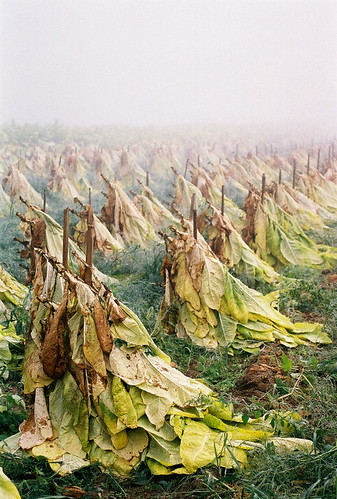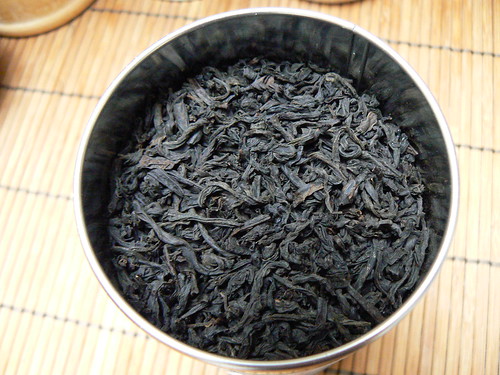Tobacco is one of the most strange, unusual, misunderstood and challenging notes in perfumery. There seems to be a fair amount of mystery surrounding fragrances from the tobacco family, which is why it makes a perfect fit for the “Decoding Obscure Notes” series.
Tobacco as a fragrance family name is used almost interchangeably with Leather. Interestingly, the relationship between perfume and those two seemingly unrelated artifacts are quite fascinating.
Origins
Like several other important members of the nightshade (Solanaceae) family, tobacco is native to the Americas and the West Indies. There are two main species of tobacco that are used aromatically, medicinally and commercially. Nicotiana rustica, which is a wild tobacco that is native to the West Indies and Eastern North America (i.e.: USA and some parts of Canada), and was the one used by native Americans since time immemorial; and Nicotiana tabacum which is indigenous to Central and South America and only later cultivated with much commercial success in North America in the state of Virginia. The name tobacco likely originated in the Tahitian word “tabaco”, a Y shaped pipe for inhaling the plant’s smoke through both nostrils.
History & Cultural Significance
Tobacco is a sacred plant in all Native American tribes. The first to use it were probably the Mayan Indians, and its use was spread throughout the entire continent. Tobacco was an essential element in most Native American rituals, and was used in different ways: placed as an offering to the gods or the spirits, burnt on the fire, smoked in a pipe or the leaves were rolled into the ancient forms of cigars in South and Central America (at times also elaborately decorated). Pipes were smoked to “seal deals” and agreements between tribes. The pipes themselves have a symbolic meaning: the “straw” part is considered projective or masculine, and the bowl where the tobacco is burnt is considered receptive, or feminine. There is a significance to the materials from which the pipes are made as well, and cultural messages hidden within the decoration of some pipes (which has become particularly elaborate in Central and Southern America).
Medicinal Properties and Health Issues
The Indians’ reverence for the plant and great respect to its powers prevented them from becoming addicted to it. They usually did not inhale the smoke when smoking the pipe. And the plant was used medicinally to treat many ailments (asthma, fever, bites, stings, and to clear the head). Tobacco was administered in different ways – i.e.: chewing, snuff and smoking.
Tobacco’s medicinal properties seem quite aggressive – it’s considered a “sedative, diuretic, expectorant, discutient, and sialagogue, and internally only as an emetic, when all other emetics fail” (Botanical.com) but I suppose there is place for these actions too in some cases, as long as it is used appropriately and with caution.
The principle constituent in tobacco is nicotine (by the way – both the chemical and the Latin name for tobacco are named after Jean Nicot, the French ambassador in Portugal, introduced the plant to France). This alkaloid a clear, poisonous oil and appears in larger proportion in the plants grown in their native territories.
Ironically, once introduced to the Western world by the European invaders, tobacco has become one of the most dangerous plant substances in the world, resulting in illness and death of millions one in every ten adults dies from tobacco use world wide. Every 8 seconds someone dies because of tobacco. And to read more grim facts about the consequences of tobacco abuse, click here). And if you’re interested in digging even deeper into the history and the medicinal uses of tobacco, read this.
Curing Tobacco
What do leather and tobacco have in common? Quite a lot, actually. Both require a curing process before they can be used. And in both cases, aromatic substances and perfuming are involved in different stages of the process.
Like several aromatic botanicals used in perfumery, tobacco requires a fair amount of processing before being used (or extracted). For example: vanilla beans must be left in the sun to cure to bring out the vanillin; patchouli leaves must be dried and matured for quite sometime to improve their scent; and iris rhizomes must be peeled, dried and stored for 3 years before they are extracted to produce orris butter. In the case of tobacco, the raw leaves have a bitter taste and not a particularly pleasant smell either. Nicotine, the substance that gives tobacco most of its medicinal (and addictive) properties, supposedly also protects it from insects and makes it not a very friendly or attractive thing in its raw form. Although it was used raw medicinally (the leaves were chewed or squeezed for their juice), it is hardly the sophisticated aromatic that we have learned to recognize as tobacco.
Tobacco leaves acquire their distinct aroma only after they have been cured, a process that involves the alchemical work of enzyme to change their aroma, colour and flavour. Curing can be done in several methods to produce different results and types of tobacco.
Air Curing is a relatively simple process although it has a few stages. Depending on the climate of where the tobacco is grown (i.e.: how humid or hot the air is plays an important factor), the leaves are simply air dried, either outdoors or indoors in well-ventilated curing barns or champers especially built for them (usually right near the fields). What you see in the photo above is the original method for curing, where the entire plant is cut and placed upside down so that the leaves air-dry straight (more or less). Air curing can also take place indoors, in curing barns with a gradually increasing temperature from 33 to 77 degrees Celsius over a period of 5-7 days. Once dried, the leaves are brittle and fragile; therefore, the doors of the barn are opened on a humid day so that the leaves are soft again and can be removed from the stems and stacked into piles of about 20 leaves per pack. They are left there to fully ferment and develop a uniform brown colour. The process takes about 8 weeks. The result is a tobacco that is light in flavour, and has higher level of nicotine.
Fire Curing occurs indoors in curing barns where hardwood fire is kept for several days to produce a smouldering smoke. This also produces a high nicotine level and is mostly used for pipe tobacco, chewing tobacco and snuff.
Flue Curing is a method that heats the curing barn through pipes, without the exposure to the smoke itself. Flue curing produces a tobacco that has more sugar, and less nicotine, that is used for cigarettes.
Sun-Cured tobacco is the result of leaving the tobacco outdoors and exposed to the sun. After 4-5 days in the sun, the leaves are taken indoors into a well-ventilated barn at 22 degrees Celsius where they will become soft and can be packed. This method is mostly is used in the Mediterrenean region (Turkey, Greece, etc.) to create oriental tobacco, which is used in cigarettes and hooka (sheesha) blends and is low in both sugar and nicotine.
After curing, there is a process of fermentation: The stacked leaves are left to ferment until they reach once the leaves are stacked, and reach a temperature of about 55 degrees Celsius. After a month they will reach a uniform brown colour, and than they are prized which entails pressing the bundles of leaves into big bulks of 1000lb each. The pressure has to be just right to avoid discoloration of the leaves; and often times rum, vanilla or molasses are added as well at this stage.







